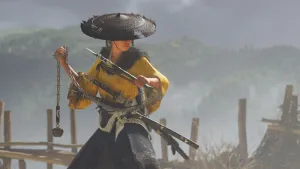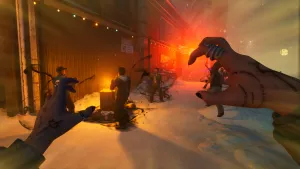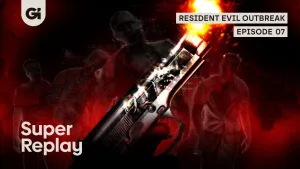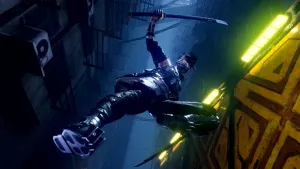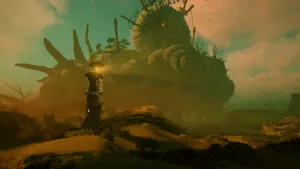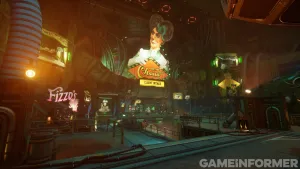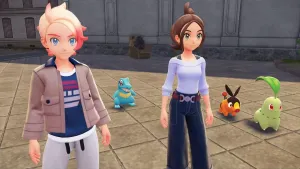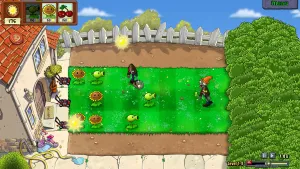Afterwords: StarCraft II

“Outstanding. A truly elite title that is nearly perfect in every way.” That’s how the GI review scale describes a game that receives a 10, and it’s also a description that I think fits quite comfortably with StarCraft II: Wings of Liberty. But a game of this level of quality doesn’t happen out of nowhere. It takes years of hard work, dozens (if not hundreds) of lengthy meetings and debates, and a truly talented and passionate team. To get an inside look at how StarCraft II was created, we talked with lead designer Dustin Browder.
Read the full interview below to discover what influences the team had in their design decisions, why they weren’t interested in bringing wild changes to multiplayer, and some early hints and what we can expect from the next game in the StarCraft II trilogy, Heart of the Swarm.
Any game that Blizzard does has a high level of anticipation going among gamers, but I think in StarCraft II’s case, the hype and excitement around it reached crazy proportions. It’s a sequel to a game people have been waiting over 10 years for, and the original is on a lot of best of all time lists. It was number 35 on our top 200 games of all time. How did you approach dealing with the clearly high level of expectations out there and the amount of stress that brings to the process of creating the game?
There was a lot of fear obviously, because we know that we have a lot of responsibility to hearken to the legacy of this game and to do it justice, to be worthy of the name StarCraft II. We just knew that expectations were really high. We tried to be aware of that, but I think at some point we just put our heads down and just tried to focus on the game as it was and make the best game we knew how to make. We hoped that we could come up to that standard at the end of the day.
Throughout the development process, from when we first started working on it until the last bit, there was a lot of concern that maybe we wouldn’t hit that quality level. It’s so important for the fans and us, as fans ourselves, to walk away from this and know that we did a good job. So we ultimately put our heads down at some point and said, “Look, we’ve got to make the best game we know how to make.” We had to not worry too much about the fear and just focus on quality.
Did you ever have those moments of panic, though? Like, it’s the middle of the project, and suddenly you realize, “Oh my god, I’m making StarCraft II.”
Constantly. And I’ve got to tell you, it got worse as we got closer to the end. We were getting more and more positive feedback from the beta and positive feedback from people internally. Even people internally who’d been skeptical for quite a while started turning and saying, “No, I think you’re good. I think this is going to be fine. I think you’re doing a really great job.” But as we got closer to the end, we lost more control. The game is mostly done. There’s not much you can do in the last month-and-a-half except fix the bugs. As we got closer to the end and more unable to change things, I know my personal level of terror skyrocketed.
Even on launch night, I’m smiling and happy and excited that we’re done, but we’re about to put it in the hands of the consumer. Our baby is going out there, and there’s nothing we can do for it now. Either our baby is prepared or it’s not. That first couple of weeks when the reviews were coming out was truly terrifying, just to see what the response was from the community and the critics. It’s definitely exciting times.
One of the most interesting choices in the game from my point of view is the between-mission segments in the ship where you can click on different items and talk to characters and learn additional information. Many players have mentioned how this recalls the Wing Commander games, and it even reminded me a little bit of the Mass Effect series. What inspirations were you drawing on when you came up with these segments, and why did you feel that they were necessary for the game?
Certainly Wing Commander is one that was talked about frequently in the studio when we first started this project. I don’t think Mass Effect was even out yet when we started creating this, so that wasn’t a reference we could use, but it was one we could use later on.
We’d always had these elaborate briefings in StarCraft. Then there were cutscenes using the engine in Warcraft III. The team had always wanted a chance to do more with story. We knew that for StarCraft, we really needed to find places to innovate with the game, and we knew that solo play was an opportunity to do something a little bit new. We wanted to give players some choices, some options, some gameplay that hadn’t existed in our titles before.
I know Wing Commander was one that was definitely talked about because it was such a story-heavy game. We’ve always been story-centric with our RTS games ever since StarCraft. A little bit in Warcraft II, but especially since StarCraft, story has always been really essential to these experiences. It was an idea that was already here when I started at Blizzard. I know Rob Pardo and Chris Metzen had been talking about that for several years; I’m sure there were many people around the studio that had already been talking about this kind of Wing Commander approach. Obviously we had lots of directions we were taking it before we settled down on exactly what we ended up with.
I think what we’re hoping to do is try to bring the clunky story-telling tools that we had from Starcraft and Brood War and Warcraft III and try to bring them into the 21st century and really push the story and give players opportunities to experience it in new ways that aren’t just more cutscenes. We wanted players to have some kinds of choices about what they wanted to do. I think ultimately, we would have liked to have done more choices, but I think we’re pretty happy with the kinds of choices we provided players.
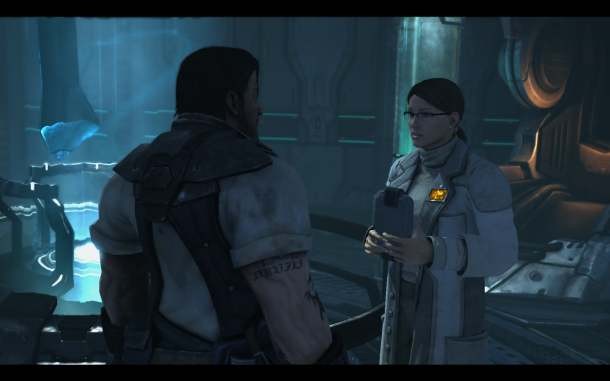
In the original StarCraft and Brood War campaigns, the player takes on the role of a nameless commander for each of the races. In Wings of Liberty, it really feels like you’re playing as Raynor. You’re leading his army, you’re engaging with his crew members and making decisions on what to research and all of that. What was the reason behind this shift in philosophy? Did you discuss the change in perspective before you started creating the game?
Oh yes, frequently. Every little decision that has happened in this game – some of which you would probably find laughably trivial – has been a three-week or longer holy war at some point in development. Even to this day, some people at Blizzard may not concede that we did it the right way. We talked about that frequently, whether we should focus on a single character or keep the nameless character, the nameless advisor or executor or whatever. We felt like since you’ll be seeing somebody walking around the environment….
At one point during development in story mode, players controlled the character more directly. You could click around in the space and decide if you want him to stand here or a little bit to the right. Not that it mattered, but it was more of a third-person game with the character moving around the environment. Once we had you controlling a character in that way, it just seemed to make a lot more sense that you were actually that person as opposed to someone controlling that person. If I’m telling Raynor to stand here, it didn’t make sense that I was his second-in-command. That felt awkward.
We transitioned away from that and decided that if you click on the environment, you immediately start interacting with it. The other method wasn’t responsive enough. It didn’t matter if Raynor stood three feet to the right of the console or one foot to the right of the console, so we got rid of that. It wasn’t really necessary. But the conceit of who you were remained.
You mentioned how players make choices throughout the game. One of the few complaints I’ve heard echoed about StarCraft II is that those choices that you make are based heavily around the plot that’s developing, but they end up having very little effect on the story. Instead, the choices decide mostly gameplay-related elements. Was there ever any plan or had you ever discussed having the story branch off more based off the player’s choices?
We did, and there were a couple of factors that went into why we decided not to go that route. One of them, of course, was simply the cinematics we’d have to do. If we had a really widely varying game, we’d have to create multiple end cinematics, and if we wanted those to be pre-renders, that wouldn’t have been feasibly possible for us. At that point, they could have been in-game cutscenes, of course, which I think look pretty good. That’s an option we could have chosen.
But the second factor is more of a creative choice. We’re even now struggling with this a little bit with what has happened in Wings of Liberty. There isn’t really a canon. We felt like a lot of our players and we ourselves wanted to know what happened. We wanted to have that sense of story. While other games – Mass Effect being a great example – do embrace that sort of player-chosen story, and that’s really one of the core hooks for their entire game – that’s really what their game is about – we didn’t feel like that made as much sense for our game. We felt like people want to know, “How did StarCraft end?” not “Which ending did you get?”
That’s very subjective. I don’t know why we felt like that was right for StarCraft, but obviously for Mass Effect that’s not the case. Some fans out there look at games and want to say, “One size fits all.” Some people ask where storytelling in games is going and think it has to go one way or another. That’s not a satisfactory answer for them. It’s either the Mass Effect way or the StarCraft way, and that’s what it has to be. We view it as more of a continuum. It can be any way that makes sense for the game. What makes sense for Mass Effect may not feel right for StarCraft. I don’t have a harder, math answer for you, but it felt right to us that StarCraft had a canon, that there was an ending that everyone can understand.
I agree that there’s room for both those types of games. It definitely seemed to me as I played through, though, that were remnants of you considering doing multiple endings. For example -- and without getting into too many spoilers about the end of the game for readers who might not have finished it -- a lot of times throughout the story, a crew member or someone will confront Raynor and ask him, “What’s going to happen when you meet Kerrigan?” And he constantly brings up this idea of how it’s going to be up to him. It’s his choice. Nobody else is going to affect it. As I was building up to that, I kept wondering, as Raynor, am I going to be able to choose what happens? Things like that struck me as remnants of a change in design.
That particular line was actually not a remnant, but you’re right that they exist. We had many discussions about what we wanted to do, and a lot of the choices that we settled on between Tosh and Hanson and some of the characters where you make significant decisions about their fate, that’s us paying homage to that type of gameplay. We find that fun, and we want to include some of it, but we still want to have canon when it ends.
The lines you’re talking about really are designed to build tension for what’s going to happen in the end-game scenario. What will Raynor decide to do? It wasn’t trying to imply [player choice], but I totally see why you would have thought that. That makes sense to me. Maybe we were telegraphing something there that we should have been more careful with.

Since I’ve been spending so much time on story, let’s get into the actual gameplay a little bit. Clearly you set out from the beginning to put a huge amount of variety in the single-player missions. That comes through as you play. I remember in a previous interview I did with you, you explained some of the process behind mission design, and how you’ll come up with mission ideas and then drop them completely. In addition to the 30 or so missions that made it into Wings of Liberty, how many missions do you estimate that you spent time getting along to various points in the design process but didn’t quite come to fruition?
Well, my level designers would have an angrier answer for you, I’m sure. I can certainly think of five or six that I know were changed so radically that only the filename remained the same. [laughs] Everything else was different. We had a mission at one point with a pirate that you were trying to capture, and he had a special ship that could teleport, so he kept teleporting away while you tried to hunt him down and kill him.
We had tons and tons – well, not tons and tons, more like five or six that I can think of – that were developed in the early years that didn’t quite make the cut. I can’t remember all the specific mechanics, but I know they’re out there. The mechanics weren’t quite right. They changed so substantially that either they weren’t recognizable or we literally threw them out wholesale.
Some of the missions, like the mission on the planet where you’re working for Horner on the junk world, and there’s the mercenary captain. I don’t want to give away too much, but there’s a mission that changed seven or eight times in its core mechanics, so many times that it’s really not recognizable as the core mission that we started off with.
That was one of my personal favorite missions.
One of the things we struggled with in that one was finding ways to make it feel like you’re a mercenary. At one point we had units on the map that you could buy directly. You would see lines of units lying around that you could walk up to, click on, and choose to hire them or not. We struggled for a long time trying to make it feel like you’re in a world where there’s betrayal and counter-betrayal. At one point, there was actually a choice as to whether you wanted to hire Mira Han. If you chose not to hire Mira Han, Orlan could hire her, and you’d have to deal with both armies at once. It was more complicated and seemed more interesting, but it ended up playing out the same way every time. We ended up simplifying the mission in that respect and adding complexity elsewhere. There was definitely a lot of iteration that went on and lots of casualties of war as we proceeded with the game, lots of ideas that weren’t quite there that got tossed aside in favor of stuff that we thought was better.
Did you have missions where you started designing whatever the hook was for that mission and then realized it might work better for one of the future campaigns?
Not really. We definitely had ideas for Protoss and Zerg-specific mechanics, but if we had a good idea, it was going in Wings of Liberty. We needed every idea we could get. I’ve heard of people being afraid of using their ideas now when they can hoard them for later, but no, we definitely don’t do that. We try to jam everything we can into whatever’s in front of us. We have the courage and confidence to know that, you know what, later on, we’ll do more work, and we’ll have more ideas, and we’ll think up some cool stuff. We had ideas for missions about spreading creep and missions about warping that obviously wouldn’t work as well in a Terran campaign, so we didn’t use them. But if it was a mechanic that would work for any race, it got used.
Yeah, I remember you had a quote in that previous interview from somebody on the design side who said after a meeting, “I didn’t think we could come up with any more ideas, but we did.”
Yep, I remember very specifically Mike Heiberg saying that to us on the third or fourth day we were in meetings. He’d been in hundreds of design meetings for dozens and dozens of missions. He said, “Surely, we’re out of ideas for RTS missions right now.” But you add new units, you get some new story ideas, and you’d be amazed at what can come out.
One thing that I thought was a huge success in StarCraft II was the addition of research and purchasing upgrades. That brought a lot of interesting strategy to the single-player campaign and made different playthroughs a little bit different depending on what you purchased. I don’t know if you can talk about this yet, but is that going to be carrying forward in some form to the Zerg and Protoss campaigns?
Absolutely. The big challenge for us is going to be a couple of things. First, we have to transition the fiction a little bit. Kerrigan is not worried about credits. Nor is she worried about tech upgrades or research. This is not part of the Zerg biology and economy. Kerrigan should be worried about how she’s going to evolve her swarm. Exactly how we’re going to do that from a story perspective but more importantly how do we make that feel like a fundamentally different mechanic is the challenge we’re facing in the coming months working on Heart of the Swarm.
We want to make sure that it’s not just a creepy-looking version of tech purchasing. We don’t want you to look at it and say, “Well, they slapped some slime, and they put a couple of worms wriggling on the tech purchase screen. Hey, look, it’s Zerg evolution.” That’s not cool. We’ve got to figure out what we can do to make it feel unique and special, to make you feel like you really are the leader of the Zerg army. It should be a lot of fun for us to work on and will hopefully provide some really new gameplay.
Turning to multiplayer, I know from reading various interviews before launch that one of your major goals with StarCraft II was to help make the super-competitive, super-hardcore multiplayer community a little more approachable. You designed challenge maps and achievements and co-op and a lot of other ways to help that. Now that the game has been out for over a month, I’m sure you have some internal numbers on how many people have been checking out multiplayer. How successful are you feeling that you’ve been in this regard?
I’m going to have to apologize. We don’t have those numbers yet.
Oh, I wasn’t expecting you to provide specific numbers.
I’d be happy to give them to you. I really would. I’d be enthusiastic to rattle off date, time, and numbers. I have no problem doing that. We have been struggling with the volume of data incoming. Our guys internally have been working super-hard with a lot of overtime to try to get those numbers as soon as possible. I don’t have stats yet on what achievements have been done, which is one of the most interesting ways to look at player behavior in terms of what you’re talking about.
I have had a lot of anecdotal data that’s been extremely positive from people. The casual players are saying they don’t play RTS, but they’re playing this one. Or, like, “I showed it to my girlfriend, and suddenly she wants to play cooperative or play 2v2 online.” I have good anecdotal data, but I’m afraid I have to apologize both to you and to the fans. We don’t have the really hardcore numbers yet that show us how successful we were. We’re hoping to get those in the next few weeks and really get a good look at what’s going on out there in the wild. I’m really curious myself to know how we’ve done. Anecdotally we seem to be doing well. People have been saying nice things, but that doesn’t really mean a lot in the face of millions and millions of players who would love to know what’s actually going on out there.
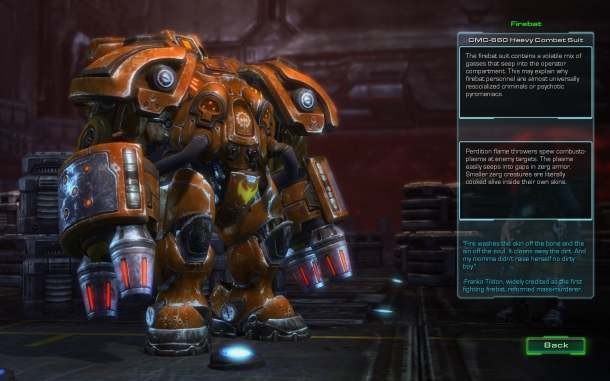
Again, one of the very few complaints I’ve heard about StarCraft II, but one that I’ve heard repeated over and over, is that the multiplayer is too iterative, too similar to the original game. It seems to me that given the first game’s popularity as a competitive multiplayer title, you were kind of stuck needing to emulate that success rather than experiment with something new. Was there ever any frustration with designing the multiplayer? Did you ever discuss trying something wildly new or different, or did you know from the beginning that you had to stick to this formula that was so insanely successful?
There’s challenges, so there’s certainly frustrations in trying to create really great new content given how great the first game was. To make something worthy of that was really a challenge. I don’t know that we ever felt like we couldn’t do something new if we really wanted to. It was more a question of what did we want to do, and we felt like there was more we could do in this space, that there was more opportunity for us to improve on what had already been done.
Certainly, there was a lot of fear that we couldn’t. “You’re going to try to make the old one better? There’s no way!” That was a concern that we had internally. But we tried to get some courage and pull up our boots and push to see if we could actually improve on greatness and make it even better. I don’t know if we have or not. I don’t want to speak for it. It’s still out there. The meta-game is still settling down. We’re still seeing lots of players playing. We’re seeing lots of great tournaments right now. We’re seeing a reasonably diverse number of players across all levels of play, playing all three races. I’m certainly hopeful that we’ve been able to improve on greatness and make a game that’s even better.
I don’t want to seem nasty here, but the question is, how great have those successful “experiments” from other developers been? I haven’t really seen another gameplay experience that’s attracted millions of players with hundreds of thousands playing online. I haven’t seen that. So the idea that these other experiments have been successful, and therefore we must emulate them? I object, sir. I object strenuously. I have not seen someone else be successful by removing economy. I have not seen other RTSes be successful by removing micro.
What a lot of other games have done is they’ll pull the camera back and say, “Look, it’s all economy now.” Or they’ll push the camera in and say, “It’s all micro; economy’s dead.” And they’ll say, “See! We’ve made it better!” I have to strongly disagree. I definitely enjoy those games, but I don’t know that they’re ultimately a better competitive RTS experience. They’re different, and that difference has a value in the sense that for the three weeks that I’m playing it, it feels new and shiny. But then when I get down to it, I realize that there’s actually less to do. I don’t play it for weeks or months.
I don’t know if StarCraft II can survive that test of time. I don’t want to say that we can. We’re certainly going to try. That’s what we set out to do in the first place, to definitely improve on what had already been there and not just change for the sake of change. Like I said, I don’t want to be a jerk, but I feel like a lot of other studios have changed just for the sake of change. They haven’t made a better product, they’ve just made a product that is different.
Yeah, it seems like certain fans champion change above else. The attitude seems to be that if something is different, that’s great, even if it’s not necessarily change for the better.
There are fans out there who wish we were more like Supreme Commander, for example, because they love Supreme Commander. That’s great. If they love Supreme Commander more than StarCraft II, they should definitely be playing that. We felt like we had a better product. We felt like we had something that is truly great and special. We didn’t just mess around with it for the sake of messing around with it.
We’ve seen a lot of mods and YouTube videos showing off how powerful the StarCraft II map editor is. Are you pleased with the number and variety of user-created maps and modes available on Battle.net right now? How quickly is that space growing?
It’s pretty crazy. I’m amazed every time I sit down to play these things how many different types of games I can get. It’s pretty nuts and exciting, even compared to Warcraft III, which had one of the most vibrant mod communities I’ve ever seen. To see it grow… It looks to me like it almost started where it left off. We were concerned it would take months or years for the mod community to catch up, but it seems like a lot of the talent and enthusiasm and passion that was there and still is there in many cases on Warcraft III: The Frozen Throne has come right over directly to StarCraft II and continued from that point forward.
On day six, we were seeing amazing things, and on day 30 or whatever it is now, we’re seeing even more amazing things. I can’t wait for Christmas. I don’t even know what’s going to happen then. At this point, it’s just been crazy stuff. We’re seeing YouTube videos of these tech demos of guys making World of Warcraft in the engine. I don’t know what that’s going to play like, but it’s amazing what these guys are going for. We’re seeing awesome stuff.
Is there currently a timeline for when you intend to introduce the paid user-created map download service that was announced for StarCraft II?
There’s really not. It’s something that we’re working really hard on. There’s a lot of challenges to bring that in front of consumers: making sure the consumers’ digital rights are protected, making sure that people can’t steal each other’s maps, making sure that we’ve got the right UI and tools to rate maps and find maps. I don’t know what’s going to be in patches versus what’s going to be in Heart of the Swarm at this point, but we’re definitely going to take steps going forward to try to roll it out piece by piece so we get more user feedback. We can get stuff in front of the consumers faster so that they can see what our plans are. I’m so sorry both to you and the fans that I don’t have a better answer for you, but we are going to keep working on it going forward.
Probably the most controversial moment in StarCraft II’s development was that announcement that the game’s single-player campaign is going to be split between three separate releases. Now that Wings of Liberty is out, I don’t think many people were disappointed by the amount of content in there, but obviously when it was announced, there was a lot of community concern. How early into development was this decision made? How did you approach making sure that people wouldn’t be disappointed with that first release?
It was the middle of development. It was not the opening move. At one point we had 17 or 18 missions per campaign, so we were looking at making 50-some missions. Even then, they didn’t have a lot of choice and options in them. The critical path was still fairly linear, and we wanted more missions than that. The more we looked at it, both our need for a lot more missions per campaign and at the same time looking at how fast we can create this content, we realized we were setting ourselves up for a 10 or 12-year development cycle if we wanted to finish it. Then the hard talks began…and the screaming and throwing of things and the battles about what we could and couldn’t do.
We ultimately decided that we could break it up like this. This would be a way to get a great product into consumers’ hands in – well, I don’t want to say a reasonable amount of time, because that’s not fair. It still took us forever. But we wanted to get a product into consumers’ hands sometime before the end of the decade. Even that we didn’t quite make, I guess, but it was still sooner!
We knew we had a lot of content and were still going to provide as close to 30 missions as we could, which was comparable to our previous products. We knew we were providing the content, but we knew that fan reaction would be loud and angry. We knew we were costing players something, because they wouldn’t get a chance to play their favorite race if it was Zerg or Protoss. When fans said we weren’t giving them value, we knew that wasn’t true, but we knew that we were costing fans something if they only came to the game for Zerg and now have to wait another two years. That was a price we had to pay.
Looking at all of the choices we were giving players and the additional depth that the game would have as a result, it was totally worth it. We were looking at maybe a 12-mission campaign for each race. And looking at the plot, we’d be racing through these stories at light speed to try to get it done. If we’re only going to be able to do 30 to 35 missions, we’d be racing through the story. “Hey, here’s Jim, now he’s doing his thing, and he’s done. Okay, here’s Kerrigan.” We’d be going so fast that the story wasn’t going to be able to breathe. We just knew it wasn’t going to be as fun.
So we made that sacrifice. We felt very sorry for our Zerg players, but we’ll have to pay it back to them when we get to that campaign with a larger campaign, with more details on Kerrigan, a more in-depth look at what it means to be a Zerg. But it’s going to cost them right now for the first release, because we had to delay it a little bit. I stand behind that decision. I’m absolutely convinced and will be to my dying day that it was absolutely the right creative choice even though we knew that it would cause a lot of outrage. We had to count on our fans to buy the game and see it through and hopefully agree with us that we made the right choice. As a player, I think it was absolutely the right choice to break it up. It allowed us to focus on the plot and focus on the choices and tech tree and technologies at the player’s command and make something truly awesome.
It certainly seems that since the game’s release, the fervor over that decision has died down quite a bit. I know you guys are still recovering from finally getting Wings of Liberty out the door, and again, congratulations on three million copies sold so far. That’s fantastic. I’m sure it’s far too early to go into any specifics on the expansion stuff, but I’ve got to ask: Can you give us any hints as to how long we’ll be waiting or when we can expect to hear more about Heart of the Swarm or Legacy of the Void?
I don’t really know yet. One of the things we’re trying to avoid – we’ve always tried to avoid it, and we still fail frequently – is to unintentionally lie to our fans. We don’t like telling them dates, because we’re so often wrong, and that just upsets them. We don’t like telling people creative stuff until we have some idea of what it’s going to be. We definitely want to get stuff out there so people can comment on it. We get a lot of good comments from our fans based off of interviews like the one we’re doing here, so I like to get stuff out there, but it’s still way too early to know.
We are working on it. We’re working on our patches going forward. We have a lot of exciting plans for Battle.net in future patches. We’re going to monitor balance for future patches. We’ve got some mods we’ve developed internally that we’re going to put out to get some more art into the hands of the mod makers but also provide what we hope are some polished gameplay experiences for our fans to get more value out of Battle.net. But I don’t know when we’ll be ready to roll something out on what the mechanics are for Heart of the Swarm, what some of the missions will be like, what our multiplayer plans are. We have a lot of stuff we want to do. What are we going to do with challenges going forward? There’s so much stuff we could be talk about, but I don’t know for sure what any of it’s going to be yet, and I don’t want to spin a bunch of tales and have them turn out to be B.S., and then the fans are sad. I’m afraid you’re just going to have to wait. I’m sorry we don’t have more information for you right now.
I just had to ask.
Totally, you’re right. Keep asking!

Get the Game Informer Print Edition!
Explore your favorite games in premium print format, delivered to your door.
- 10 issues per year
- Only $4.80 per issue
- Full digital magazine archive access
- Since 1991
